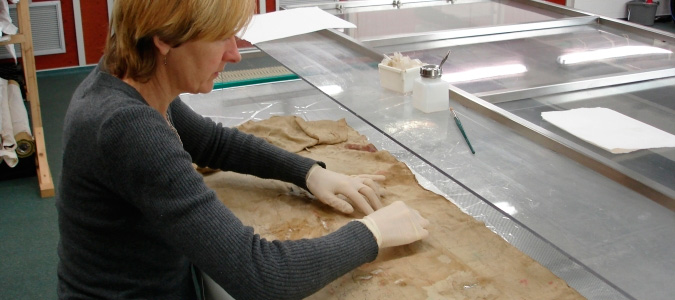
There are three methods for cleaning textiles: dry or mechanical cleaning, chemical cleaning with solvents or wet cleaning with water.
The objective of mechanical cleaning is to remove dust. Dust, fibres, flakes of skin, soot and pollen constantly settle on everything. Dust particles are sharp and often acidic. As a result, dust damages textiles both mechanically and chemically. Above all, dusty textiles attract insects and moulds. Mechanical cleaning is performed using a variable suction vacuum cleaner and brushes. Various types of cleaning erasers and powders are also used.
Textiles are chemically cleaned if soiling is greasy and stains cannot be dissolved in water. Solvents like ethanol, white gasoline, acetone etc. are also used for removing old adhesive residues. The ICAT studio has a specially ventilated washing room so that even large objects like adhesive impregnated tapestries can be treated.
The objective of wet cleaning is to remove soiling that is soluble in water and the acidic brown products of textile degradation. This improves the pH value of the textile. Above all, water flattens a textile object and makes it slightly more supple. Textile objects are always cleaned flat in the washing basin or on a special washing floor. Prior to this treatment, thread samples are taken to check if they are resistant to washing and that the dyes do not run in water.
Suction table: the suction table has a great many purposes, from treating fragile textiles to textiles in which the colours run, for the flat drying of fragile textiles and the increase of the internal humidity of an object. Water can be employed on the table and because the table is equipped with an extraction hood it is also safe for use with chemicals.


